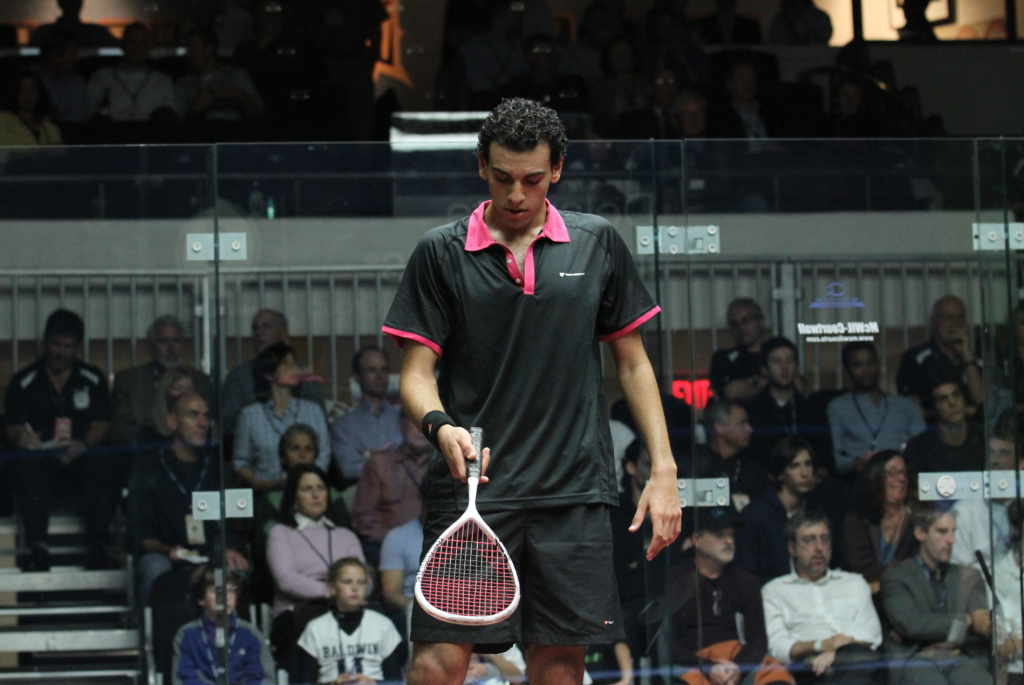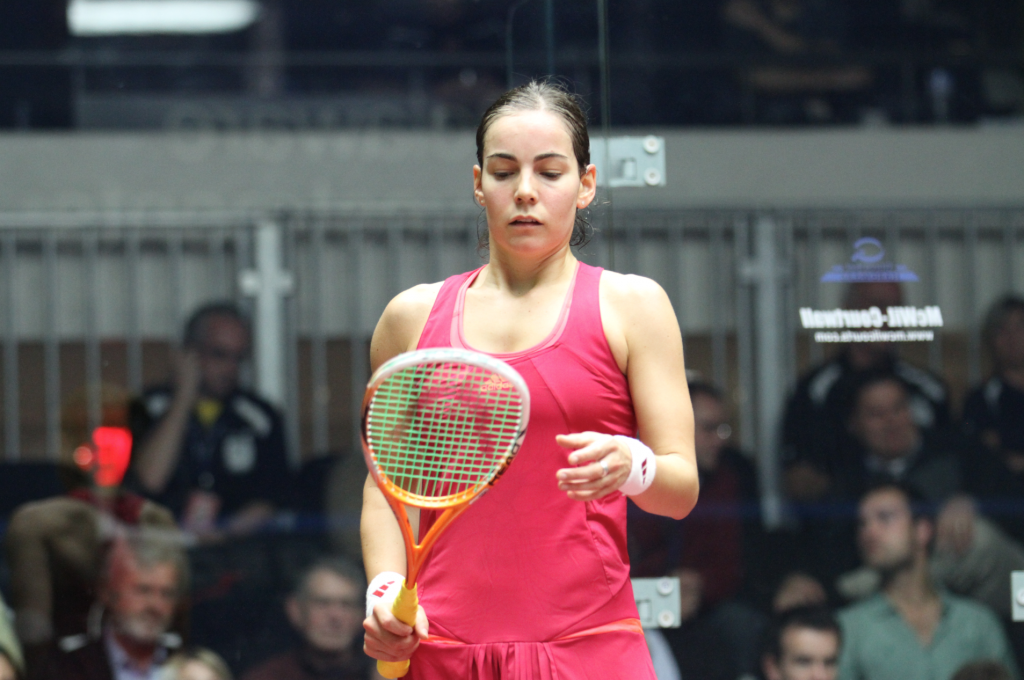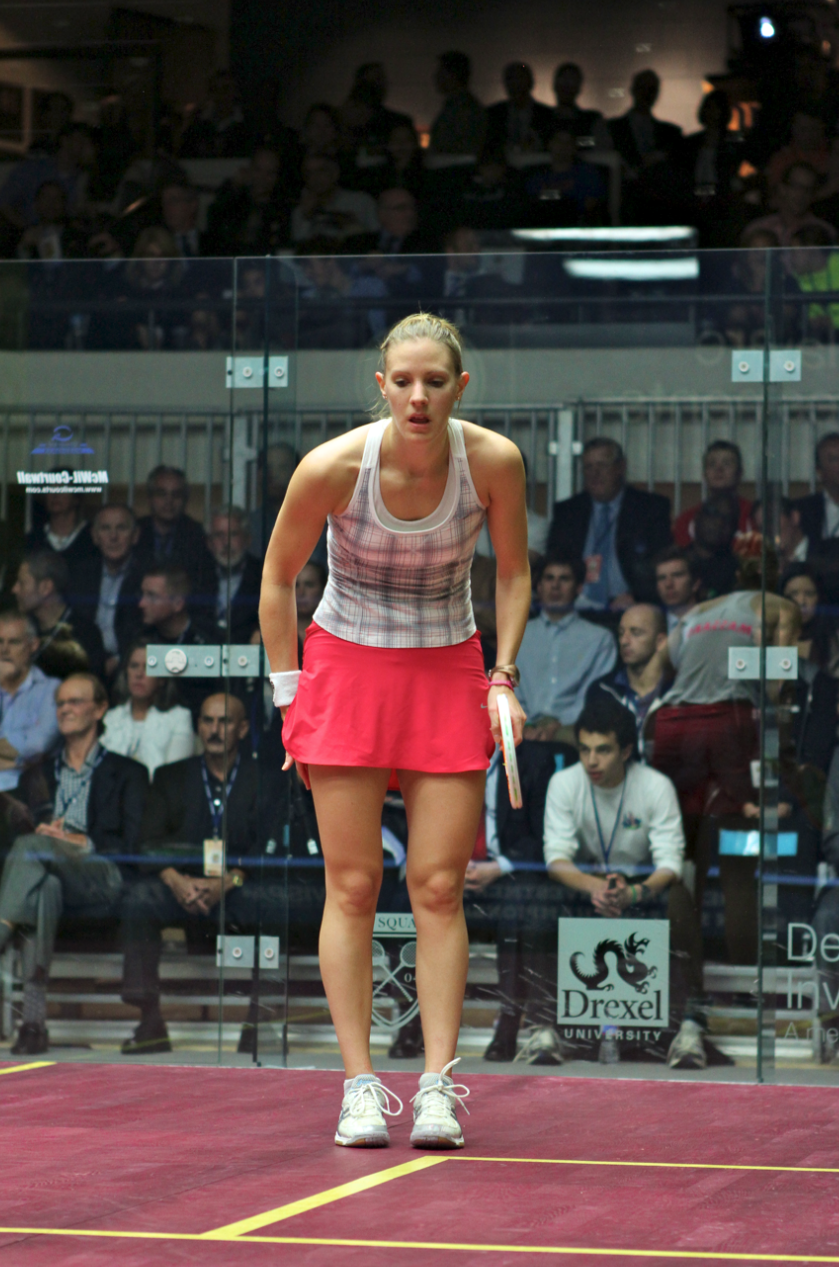By Richard Millman, Owner – The Squash Doctor Corporation

After the serve, the second best way to gain an edge in a rally is the return of serve.
By developing a consistent routine for your return of serve you can not only decrease pressure on yourself, but actually increase pressure on the server, who ought to be in the driver’s seat.
Here are some ideas to work on:
If you are returning serve at the beginning of a match, your main focus should be to try and gain position as soon as possible. The safest return of serve in this situation is high and tight, straight down the wall—assuming a good serve from your opponent. However, make sure that you observe your opponent’s behavior as they deliver the serve.
For instance, did they keep their attention on the ball after they struck the serve, or did they make the classic error of switching their main focus from the ball to the ‘T?’ If so, they will be vulnerable to a drop volley or cross-court drop volley, because they will have severed their connection with the ball momentarily. Perhaps not immediately, but put that thought in your back pocket for later—you may be able to catch them with their weight and focus settled on the ‘T’ and thus separate them from the ball at a crucial moment in the match.
 Are they overcommitting their body weight toward the ‘T’ or even your side of the court as they rush from the service box? In this case the high cross-court volley return of serve may catch them moving in the opposite direction, thereby gaining you a big advantage as they realize the danger at the last moment and try to twist back to retrieve the ball.
Are they overcommitting their body weight toward the ‘T’ or even your side of the court as they rush from the service box? In this case the high cross-court volley return of serve may catch them moving in the opposite direction, thereby gaining you a big advantage as they realize the danger at the last moment and try to twist back to retrieve the ball.
Did they fail to move at the same time as hitting their serve? This would leave them vulnerable to the quick straight drive.
It is unlikely that you are going to win the point outright on the return of serve. Your main focus is to gain an edge from which you can progressively ramp up the pressure on your opponent.
Think carefully before being very aggressive on your return. Make sure you always think about where you will be standing after you hit your shot, making sure you are on your way there just before you strike the ball.
If you are returning after having lost a point, make sure you clear your mind before turning to face your opponent. You don’t want to give them the chance of following up a winning rally by pressurizing you again before you have regained your focus and feel you can commit yourself 100 percent to the next rally. To this end, develop a ritual for return of serve much the same as your ritual for the serve; one that is tried and tested and that will get you back into the match with absolute commitment.
So to summarize:
 Develop a ritual for return of serve—this may mean straightening your strings and bouncing up and down on your toes before you indicate your readiness to play. Whatever your ritual is repeat it exactly time and again so that you have a reliable system in place. This will help your confidence. Your ritual is finished when you feel 100 percent committed.
Develop a ritual for return of serve—this may mean straightening your strings and bouncing up and down on your toes before you indicate your readiness to play. Whatever your ritual is repeat it exactly time and again so that you have a reliable system in place. This will help your confidence. Your ritual is finished when you feel 100 percent committed.
Observe your opponent serving and moving. Learn as much as you can from your opponent’s little habits and develop strategies to capitalize on them.
Move into position for the next shot as you hit your serve. Squash is a game of position. If you don’t move before you hit the ball, you won’t be in position as early as needed.
Try to gain an edge from which to build your rally, rather than looking to finish the rally. You may win it on the return of serve, but that should be a pleasant surprise—not an expectation or plan.


